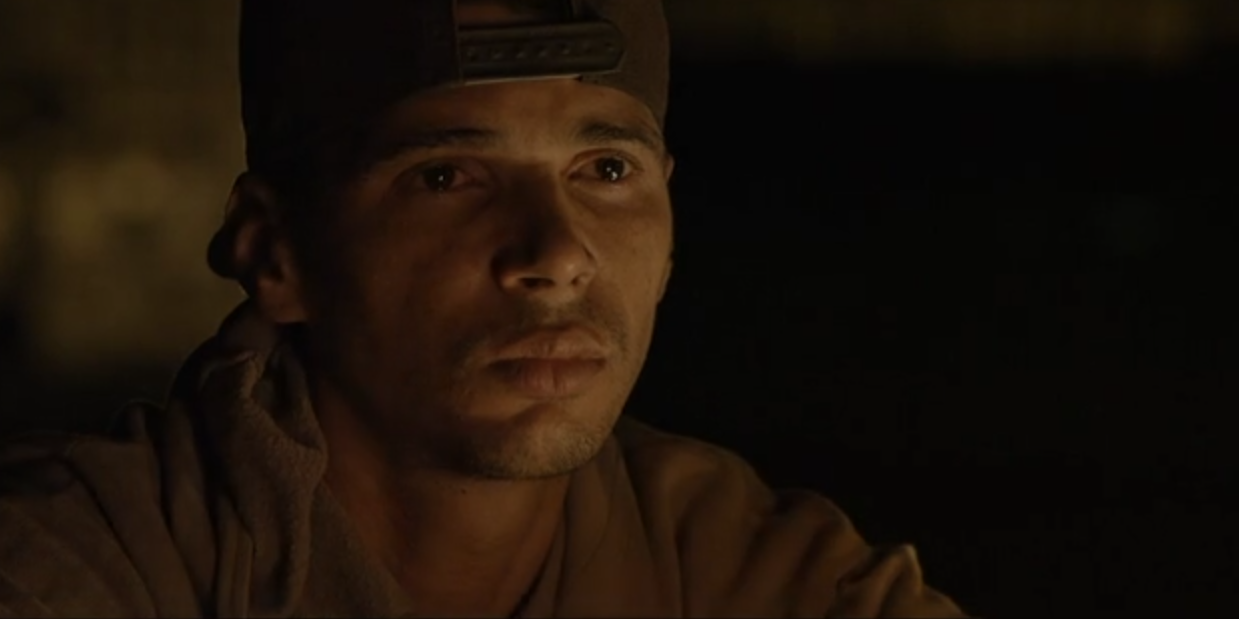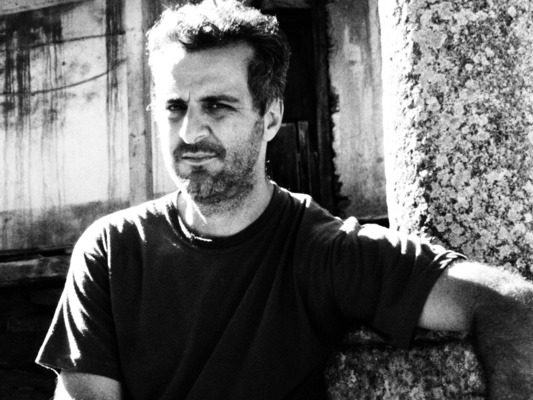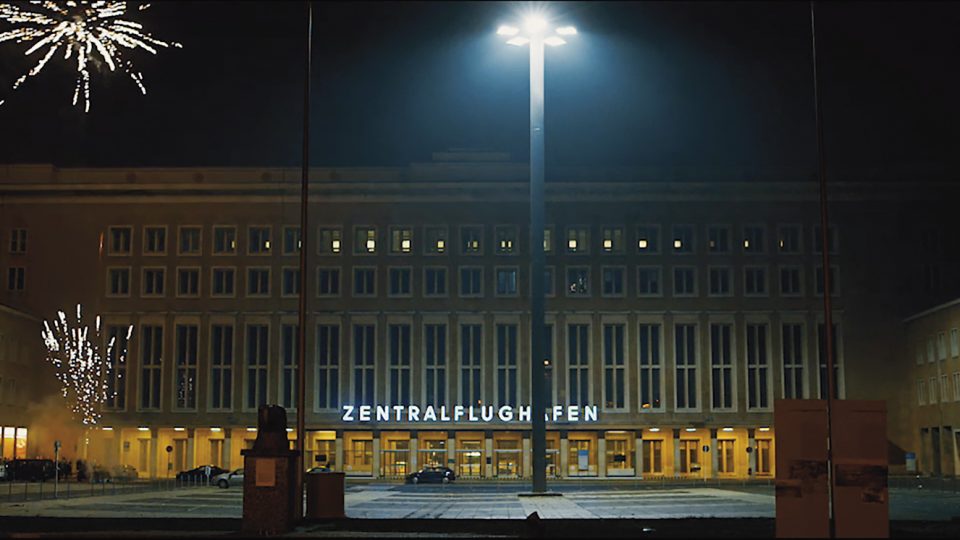
Two recent films explore the presence of the body in the documentary form.
When the Syrian director Feras Fayyad decided to film Amani Ballor, the young manager of a hospital in Ghouta, not far from Damascus, he asked his cinematographers, Mohammad Kheir Al Shami, Ammar Suleiman, and Mohammad Eyad, to treat Ballor’s presence, her body, as the most crucial element in the frame. When I interviewed him at the Toronto International Film Festival (TIFF), where his new documentary, The Cave, premiered (that interview for Film Comment may be ready online), he described his crew as being a bit shy about following Ballor at all times. This may at first seem prudish, or idiosyncratic — after all, cameras film people and places, what else would they do? But we rarely consider how radical a gesture it can be to grant absolute primacy to the body, to its physical and psychological torrents, to all its vulnerabilities. The body, after all, is a complex guide. It can illuminate but also deceive, it can deliver us from ourselves, but it can also betray us. To place the body at the center is to surrender to its vicissitudes.
In the case of The Cave, the vulnerabilities are many. There’s the fact that Ballor, as a Syrian woman, must face daily the acute polarization of her social position. She is never just a body; she carries the whole body politic with her. Ballor manages the hospital as it suffers constant bombardments by Russian planes, and later on, is attacked by gas. The chemical disaster particularly is a devastating war crime; the many children brought in struggle to remain calm, but the atmosphere of dread, of horror and utter panic, quickly invade the hospital rooms. This is made all the worse since the underground tunnels, under the hospital, where the city’s denizens have taken refuge, become a site of entrapment–the tunnels quickly fill with gas. Huddled in the claustrophobic dark, with bombs raging above ground, the many women and children are the mercy of men who have waged this war. Which is not to say that Fayyad suggests that war is only men’s business. Though the choice of a woman as his documentary’s main protagonist, who strives for order in chaos, is not accidental. All around Ballor, men would rather put her in her place. Even her patients, reliant on her, and clearly conscious of the great sacrifices she’s making to carry on with her profession in such dire times, don’t hesitate to berate and “instruct” her. Ballor should know better, but she doesn’t, because what she knows is that women are just as capable of doing this job, if not better. Throughout, Ballor’s hypersensitivity to shattering noise is Achilles’ heel. She freezes when the bombs start to roar, and the sound is amplified at least once, to bring us straight into the epicenter of Ballor’s anxiety and fear. But Ballor isn’t just a body governed by fear–a fear that speaks of and from reason, a fear meant to activate flight instincts, and so to protect. She is also a body whose resistance is tremendous. And to be with such a body, in its sphere of influence, is a tremendously rich, if often frightful, experience.
A similar richness can be found in another documentary which played at TIFF, in the Wavelengths experimental film section. Affonso Uchoa’s Seven Years in May is, in some ways, a beautifully sculpted companion piece to his second fiction feature, Arábia (Araby), co-directed with João Dumans. In Uchoa’s work fiction is never far from reality; the two often meld seamlessly, borrowing narrative throughlines from non-actors. To see Arábia’s main protagonist, Aristedes de Sousa, who was also the protagonist of Uchoa’s first documentary feature, The Hidden Tiger, speak of his role, is to gain a greater appreciation of how life and art permeate each other. There are resonances with the loss of freedom, loss of self-determination, but also resistance, regaining faith and strength, that run throughout de Sousa’s life, and echo in Uchoa’s films. Such resonances are also greatly thanks to Uchoa’s unique sensibility, which mingles the undying interest in people and in his immediate environment, in the culture and spirit of his city of Belo Horizonte and the nearby Contagem, with his fiercely imaginative, widely read, poetic bend. This amalgam of talents and interests again comes to play in Uchoa’s latest documentary, at whose center, the young protagonist, Rafael (Rafael dos Santos Rocha), recapitulates for us the scenes of his extreme brutalization and torture by the police, seven years after the incident. As hinted by the title and setup, the film is very much about permanence. Trauma persists; it has its own pernicious vividness and temperature. In a way, it is almost like a body–a foreign one–asserting itself, its reality, its existence, with vicious accuracy. This is why Rafael, as he is seated by a fireplace, the camera fixated on his face and upper torso at all times, glued to him as he speaks, can recall those moments from seven years ago with such uncanny vividness. We get a sense that those scenes seem much more real to Rafael than does the company of his friend to whom he tells the story, the warmth of the fire, the tranquility of the night. It’s that other darkness, the agony, he seeks and recaptures with his words. His voice, similarly to Ballor’s, is low, mellifluous, not a roar but a whisper, but also a sign that we must find quietness in ourselves to really receive his tale. Now we are asked to also be present, the way Fayyad’s cinematographers needed to be present. To heed the supremacy of the body, its wisdom, its strength. But also its extreme vulnerabilities, brilliantly illustrated in one sequence, which startlingly takes us from the realm of a cinema-conversation, whose affinity feels close to the late Brazilian master of documentary, Eduardo Coutinho, and into a performance-art mode: In this sequence, what appears to be a police officer (or someone acting out his part), has young people participate in an exercise, in which they must stay upright and squat, depending on whether he says, “Alive,” or “Dead.” The exercise has the youth hanging on to the commands, their bodies struggling to catch up, keep up the pace. With each beat, someone gives up, falls out of the rhythm, and must quit the game. In the area in which so many started out, fewer and fewer bodies fill the space, and slowly a deadly emptiness settles over this morbid game of life and death. To stay with this “performance,” is also to experience the fragility of the body tuned in and exposed to the fickleness of commands. One body taking reign of so many; the line so neatly drawn, between the body of the law, and those on the receiving end, but receiving nothing but arbitrariness, randomness, the absurdity and strain growing more and more sinister. The young bodies mute, unlike Rafael; a silent confrontation.
But Rafael’s is also, of course, a story being told–in contrast to the body, the mind makes its own subtle sutures, it has woven a series of causal fragments, it seeks to bring a whole out of a tremendous mixture of terror and pain. Rafael’s friend and listener beautifully illustrates how this suture is then applied to if not heal at least attenuate trauma: On one hand, the certainty, as expressed by the friend, that thousands others are being intimidated, falsely implicated, tortured and persecuted by the police, on the other, a conviction, however illogical, that the current state of affairs, the profound injustice of the system, in which some bodies are treated as if they were worth so exponentially less, cannot, must not persist forever. This dualism is not unlike what happens at the end of The Cave, when Ballor and her staff must physically abandon the premises of the hospital, which became unsafe, and even their country, yet we have a very clear sense that Ballor remains as unstoppable, if much more shaken, than before.
When the body heals it speaks; it can receive but also give, and in the end, in The Cave and in Seven Years in May, the viewers are recipients of prodigious gifts, from two consummate storytellers in documentary form.

